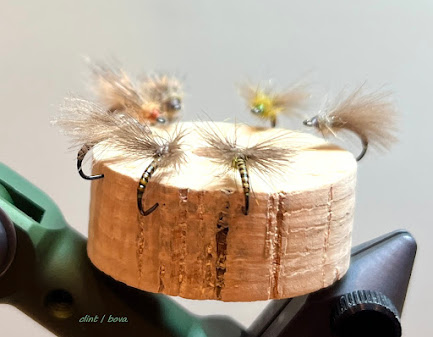CDC Split Wing Mayfly Emerger | Hanak 530 BL Hook
The Hanak 530 BL is a very versatile hook, effective for emerger patterns, wets, and drys its a variable Swiss Army Knife of hooks. On a medium wire it can handle large trout yet still delicate enough to maintain very positive hook angles and float on sparse dressings. For emerger patterns it's a great choice for both caddis and mayflys alike.
The above video shows the CDC Split Wing Mayfly in full profile on the Hanak 530 BL.
click this link you can check out the full Hook Shorts on You Tube
Shown is the quill body using Polish Quills in a golden olive using SLF Spikey Squirrel
in a light olive mixed with Superfine Dry Natural.
The Wing case is using Canadian goose primary feather fibers
A sparse dressing and very simple fly to tie using just the basics.
I will do a full step by step on this pattern on my next entry you can also check out my You Tube channel and click the above link.
check out my “shop notes” section www.cjbovarods.com for 23 years of blogging about rod making, fly tying, dying feathers, bleaching, dying quills, and dying biots.
Over 100,000 view!
Thanks for reading and watching!
~Clint Bova








